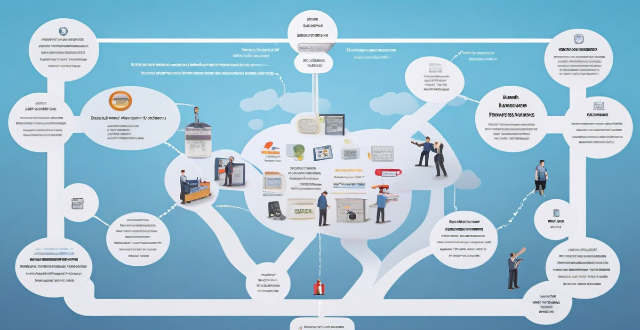Climate Policies

How do climate change negotiations influence national environmental policies ?
The influence of climate change negotiations on national environmental policies is significant, as they set international targets and promote technology transfer, financial support mechanisms, adaptation measures, stronger legal frameworks, and public awareness. These discussions help countries develop comprehensive policies that integrate climate considerations across various sectors, ensuring policy coherence and effective action towards global climate goals.

What role do governments play in implementing climate policies ?
Governments play a pivotal role in implementing climate policies by setting regulations, offering financial incentives, raising public awareness, cooperating internationally, and planning infrastructure to combat climate change.

What are some common challenges faced during the implementation of climate policies, and how can they be addressed ?
Implementing climate policies faces challenges in political will, economic concerns, social acceptance, and technical limitations. Addressing these requires stakeholder engagement, policy coherence, innovation, and international cooperation.

What policies can encourage workers to shift towards climate-positive careers ?
Policies to Encourage Workers towards Climate-Positive Careers include education and training programs, financial incentives, job placement services, legislation, and public awareness campaigns. These policies aim to make climate-positive careers more accessible, incentivize workers to transition into these roles, and promote sustainability through various initiatives.

What policies can be implemented to reduce the number of climate refugees in the future ?
Policies to reduce the number of climate refugees in the future include investment in renewable energy, afforestation and reforestation, sustainable agriculture practices, coastal protection measures, and international cooperation and funding. These policies aim to mitigate the effects of climate change and prevent displacement of people due to climate change-related events.

What challenges do countries face when creating and enforcing climate policies ?
The challenges in creating and enforcing climate policies are multifaceted, involving political, economic, technological, social, legal, international, adaptation, and information-related dimensions. Balancing environmental priorities with other policy areas, navigating economic implications like job displacement and transition costs, developing the necessary technology and infrastructure, gaining public acceptance, establishing effective legal frameworks, fostering international cooperation, planning for resilience and adaptation, and ensuring access to reliable data are all critical considerations. These factors often intersect and compound the complexity of crafting and implementing effective climate policies.

How effective have recent climate policies been in reducing carbon emissions ?
Recent climate policies, including renewable energy promotion, carbonRecent climate policies, including renewable energy promotion, carbon standards, deforestation controls Further efforts are necessary to meet emission reduction targets and mitigate the effects of climate change.

Can climate variability be mitigated through international agreements and policies ?
The text discusses the potential of international agreements and policies to mitigate climate variability, highlighting their roles in setting goals, promoting cooperation, creating legal obligations, and raising awareness. It also explores the impact of various policies on emission reduction, adaptation, research and development, and education. However, it acknowledges challenges such as political will, economic considerations, equity and justice, and compliance and enforcement. The text concludes that while these measures are crucial, they must be part of a comprehensive strategy that includes local efforts, technological advancements, and individual actions.

Can energy conservation and emission reduction policies help combat climate change ?
Energy conservation and emission reduction policies are essential for combating climate change. These policies aim to reduce energy consumption, promote renewable energy sources, and decrease greenhouse gas emissions. Improving energy efficiency and encouraging energy conservation can significantly reduce energy consumption. Increasing investment in renewable energy technologies and supporting research and development of clean energy technologies can help reduce reliance on fossil fuels and decrease greenhouse gas emissions. Implementing carbon pricing mechanisms and regulating industrial emissions are also important strategies for reducing greenhouse gas emissions. Overall, these policies play a vital role in mitigating the effects of climate change and working towards a more sustainable future.

What impact does climate awareness have on global policies and decisions ?
Climate awareness has led to the implementation of various environmental, economic, and social policies at national and international levels. These policies aim to reduce greenhouse gas emissions, promote renewable energy sources, protect forests, and raise public awareness about climate change. Some examples include carbon taxes, renewable energy targets, forest protection laws, the Paris Agreement, the Kyoto Protocol, cap-and-trade systems, feed-in tariffs, tax credits for renewable energy projects, building codes, appliance standards, school curricula on climate change, and community workshops.

How do climate and environmental policies address the needs of vulnerable communities and ecosystems ?
Climate and environmental policies are essential for addressing the needs of vulnerable communities and ecosystems. These policies aim to reduce emissions and pollution, protect natural resources, build resilience and adaptation capacity, and promote environmental justice. By implementing measures such as promoting renewable energy sources, establishing protected areas, providing funding for climate adaptation projects, and ensuring equitable access to clean energy technologies, these policies can significantly improve the health and quality of life for vulnerable communities while also contributing to global efforts to combat climate change.

What is the impact of climate and environmental policies on social justice and equity ?
Climate and environmental policies can have significant implications for social justice and equity. These policies aim to reduce greenhouse gas emissions, protect natural resources, and promote sustainable development. However, their implementation can impose disproportionate burdens on low-income communities and marginalized groups, create unequal access to benefits, and fail to recognize the unique vulnerabilities faced by certain groups. To maximize their positive impacts and minimize potential harms, these policies must take into account distributional effects, procedural fairness, and recognition of vulnerable groups. By doing so, we can create more just and equitable societies that are resilient to the challenges posed by climate change and environmental degradation.

What role do international agreements play in shaping national climate and environmental policies ?
International agreements significantly influence national climate and environmental policies by providing a platform for global collaboration, setting shared objectives, establishing guidelines, promoting cooperation, and enhancing transparency and accountability. Examples include the UNFCCC, CBD, Basel Convention, Montreal Protocol, and Ramsar Convention, which have shaped policies on climate change mitigation, biodiversity conservation, waste management, ozone layer protection, and wetland preservation, respectively. These agreements are crucial for addressing global environmental challenges and driving progress towards sustainability.

What is the role of national governments in implementing climate change policies ?
The role of national governments in implementing climate change policies is crucial. They are responsible for developing and enforcing laws, regulations, and policies that address the causes and consequences of climate change. This involves a wide range of actions, from reducing greenhouse gas emissions to adapting to the impacts of climate change. National governments have several key responsibilities when it comes to climate change, including legislation and regulation, international cooperation, funding and support for sustainable development, public awareness and education, and encouraging private sector involvement. Examples of national government actions on climate change include setting renewable energy targets, implementing carbon pricing mechanisms, participating in international climate agreements, and taking adaptation measures.

What policies are being implemented to mitigate the effects of climate change on national security ?
Climate change poses a significant threat to national security, affecting areas such as food and water scarcity, natural disasters, and displacement of people. Governments around the world are implementing various policies to mitigate these effects and ensure the safety and stability of their nations. Key policies include transitioning to clean energy sources, promoting sustainable agriculture practices, protecting coastal communities and infrastructure, collaborating globally to address climate change, and building resilience to natural disasters through disaster risk reduction and preparedness. By implementing these policies, governments aim to not only reduce the direct effects of climate change but also strengthen their overall capacity to handle related challenges, ensuring the continued security and stability of their nations.

Are there any international agreements or policies addressing the interplay between climate change and the conservation of fisheries ?
The interconnected issues of climate change and fisheries conservation are addressed through various international agreements and policies. The UNFCCC aims to stabilize greenhouse gas concentrations, indirectly supporting fisheries conservation. UNCLOS provides a legal framework for ocean governance and resource management, promoting cooperation in managing fish stocks. The CBD focuses on biodiversity conservation and sustainable use of resources, acknowledging the impacts of climate change on ecosystems vital for fisheries. RFMOs manage fisheries in specific regions, incorporating climate change considerations into their strategies. National policies integrate climate action with fisheries conservation measures. Together, these frameworks work towards sustainable management of climate change and fisheries conservation.

How can we ensure that climate policies are fair and just for all people, regardless of income or social status ?
Climate change is a global issue that affects everyone, regardless of income or social status. However, the impacts of climate change often disproportionately affect low-income and marginalized communities. Therefore, it is essential to ensure that climate policies are fair and just for all people. Here are some ways to achieve this: 1. Prioritize vulnerable communities by identifying them, developing targeted policies, and ensuring equitable distribution of benefits. 2. Promote participatory decision-making by engaging stakeholders, providing access to information, and facilitating public participation. 3. Consider economic impacts by assessing implications, implementing transitional support, and promoting green jobs. 4. Address environmental justice by addressing historical inequities, promoting diversity and inclusion, and monitoring compliance with environmental laws. 5. Foster collaboration between government agencies by coordinating efforts, sharing resources, and evaluating progress regularly.

What role do multilateral organizations play in promoting climate cooperation ?
Multilateral organizations are crucial in promoting climate cooperation by facilitating international dialogue, negotiation forums, and information sharing. They also develop strategies and policies to address climate change, identify priority areas for action, and implement policies and programs. These organizations support national governments and collaborate with NGOs and other stakeholders to achieve common goals. Their work is essential in shaping our collective response to climate change.

How do climate policies influence renewable energy development and adoption ?
Climate policies play a crucial role in shaping the trajectory of renewable energy development and adoption. These policies are designed to mitigate the effects of climate change by reducing greenhouse gas emissions and promoting the use of clean energy sources. In this article, we will explore the various ways in which climate policies influence renewable energy development and adoption. Governments around the world have implemented a range of incentives and subsidies to encourage the development and adoption of renewable energy sources. These include feed-in tariffs, renewable portfolio standards, tax credits and exemptions, and research and development funding. Carbon pricing mechanisms, such as carbon taxes and cap-and-trade systems, are designed to put a price on carbon emissions. By making fossil fuels more expensive relative to renewable energy sources, these policies create an economic incentive for businesses and consumers to switch to cleaner energy alternatives. Governments also impose regulatory measures to promote renewable energy development and adoption. These include building codes and standards, energy efficiency standards, and renewable energy targets. Public awareness and education campaigns aim to increase public awareness about the benefits of renewable energy and encourage its adoption. These campaigns promote energy conservation, support local renewable energy projects, and raise awareness about the environmental and economic benefits of clean energy sources.

How effective are current climate and environmental policies in reducing carbon emissions ?
The effectiveness of current climate and environmental policies in reducing carbon emissions varies, with global initiatives like the Kyoto Protocol and Paris Agreement showing mixed results. National policies such as renewable energy targets, carbon pricing mechanisms, and energy efficiency standards have contributed to emission reductions but face political and economic challenges. Technological advances have lowered the cost of clean energy solutions. However, significant reductions require stronger governmental commitment, financial investments in green technology, and increased public engagement.

How can governments use climate risk assessments to develop effective policies ?
Climate risk assessments help governments devise policies that address climate change by identifying vulnerabilities, prioritizing actions, developing targeted strategies, integrating sectors, engaging stakeholders, monitoring progress, and maintaining flexibility.

How can citizens influence government policies related to climate change ?
Citizens can significantly influence government policies on climate change through various means like voting for pro-climate candidates, public advocacy, education, community actions, making sustainable consumer choices, collaboration, legal measures, digital engagement, research funding, financial decisions, educational integration, corporate responsibility, and international cooperation.

What is the relationship between circular economy policies and climate change mitigation ?
The circular economy (CE) is an economic system that promotes sustainable development by reusing and recycling materials, minimizing waste, and reducing the need for new raw material extraction. CE policies contribute to climate change mitigation by decreasing greenhouse gas emissions, enhancing energy efficiency, supporting renewable energy, promoting sustainable practices, creating green jobs, and encouraging systemic changes towards sustainability. Challenges to implementing CE policies include modifying economic incentives, establishing supportive regulations, advancing technological innovation, and changing consumer behavior.

What are the current climate policies in place to address global warming ?
The text discusses various current climate policies aimed at addressing global warming, including national and international agreements and corporate actions. National policies focus on renewable energy initiatives, carbon pricing mechanisms, energy efficiency standards, and deforestation reduction. International agreements like the Paris Agreement and Kyoto Protocol set targets for greenhouse gas emissions reductions. REDD+ provides financial incentives for reducing deforestation. Corporate actions involve CSR initiatives and carbon offsetting programs to minimize environmental impact.

How can individuals contribute to the success of climate policies ?
Climate change is a pressing issue, and individuals can contribute to the success of climate policies by reducing their carbon footprint, supporting sustainable practices, advocating for change, educating themselves and others, and making eco-friendly lifestyle choices. By taking these actions, individuals can collectively help protect the planet for future generations.

How can climate financing be integrated into national policies ?
Climate financing is vital for addressing climate change challenges. Integrating it into national policies requires developing a climate change strategy, incorporating it into budgets, enhancing public-private partnerships, leveraging international finance, and promoting climate-resilient investments. This multifaceted approach ensures effective mobilization and allocation of resources towards reducing emissions, enhancing carbon sinks, and building resilience to climate impacts.

What role do climate models play in developing international climate policies ?
Climate models are crucial for understanding the potential impacts of climate change and identifying areas that require immediate action. They help policymakers project future climate scenarios, assess impacts on ecosystems and human societies, evaluate policy options, and support international negotiations. By providing scientific insights into the potential consequences of climate change, climate models aid in developing effective adaptation strategies and mitigating greenhouse gas emissions.

How do climate policies vary between developed and developing countries ?
This article compares the climate policies of developed and developing countries, highlighting differences in economic resources, technological capabilities, and political priorities. Developed countries have larger economies and more financial resources to invest in climate change initiatives, while developing countries face challenges due to limited financial resources. Technological capabilities also differ significantly, with developed countries possessing advanced technologies for renewable energy and emission reduction strategies, while developing countries lack such infrastructure. Political priorities also vary, with developed countries often prioritizing climate action, while developing countries may prioritize other pressing issues. The article concludes that international cooperation and support mechanisms are crucial for bridging these gaps and fostering a global response to climate change that is both equitable and effective.

How can we ensure that climate policies are fair and equitable for all ?
Ensuring fair and equitable climate policies requires addressing differential impacts of climate change, promoting just transitions, ensuring transparency & accountability, fostering global cooperation, and integrating climate justice into policy design.

Can environmental subsidy policies help reduce carbon emissions ?
Environmental subsidy policies can help reduce carbon emissions by promoting renewable energy, enhancing energy efficiency, supporting waste reduction initiatives, and funding research and development of carbon capture and storage technologies. However, these policies must be carefully designed and adequately funded to avoid market distortions and ensure long-term sustainability without creating dependence on government support.